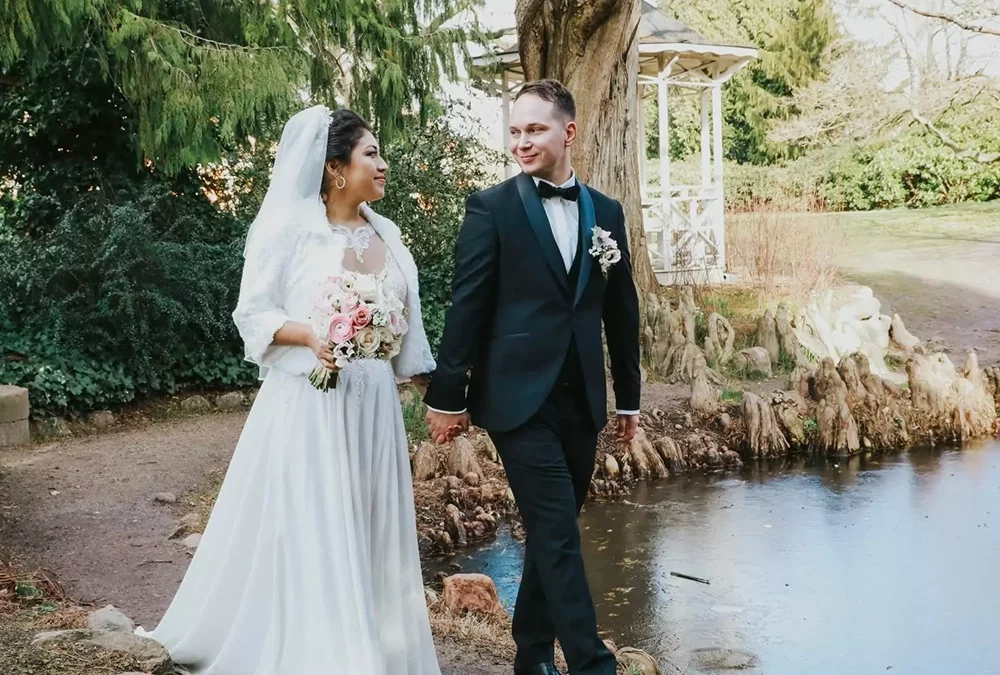When getting married in Denmark, you might find yourself drawn to the idea of incorporating some of the country’s rich wedding rituals into your celebration. Every wedding is about expressing your own personal style, values and preferences, and by weaving in Danish customs, you can add a unique and meaningful layer to your special day.
For foreign couples traveling to Denmark for their wedding, embracing these traditions can be a wonderful way to honor the local culture and create unforgettable memories. Danish wedding customs often revolve around symbolic rituals and heartwarming gestures, many of which can easily be adapted to different cultures and backgrounds. In this post, we will explore some of the most unique, interesting, and traditional rituals that you can consider incorporating into your wedding.
While some of these Danish wedding traditions are still practiced today, others have become outdated and are no longer commonly followed, allowing couples to choose what feels most meaningful to them. Many of these traditions are also found in other countries, so for many couples getting married in Denmark, the differences may not be significant.
The Father Giving Away the Bride
In the past, it was a well-established tradition for a man to seek the blessing of his future father-in-law before proposing to his intended bride. This practice required the man to ask for permission before formally proposing, ensuring he had the father’s approval to marry his daughter. Only with this approval could the man proceed to ask for the bride’s hand in marriage. This tradition is still followed today.
Another wedding tradition that continues to be practiced is the act of the father giving the bride away. This symbolic gesture represents the bride’s transition from her role as her father’s daughter to her new role as a wife, entering into marriage with her husband. The act of giving the bride away is a deeply meaningful moment in the ceremony, symbolizing the passing of responsibility and care to her new partner. This custom is also widely observed in many cultures outside of Denmark
Wedding Arrival Etiquette
According to Danish wedding tradition, the groom typically arrives at the venue accompanied by his best man. Together, they are the first to arrive, setting the tone for the ceremony. On the other hand, the bride traditionally makes her entrance as the last to arrive. She may choose to be accompanied by bridesmaids, her mother, or other close family members, making her entrance a highly anticipated and special moment.
Throwing Rice on the Newlyweds
In Denmark, a beloved Danish wedding tradition is the act of throwing rice at the newlyweds as they leave the ceremony. This custom is symbolic of wishing the couple prosperity, fertility, and good fortune in their new life together. The rice is meant to bring blessings of abundance and happiness, ensuring that the marriage will be fruitful and filled with love. Friends and family eagerly gather outside the venue to shower the couple with rice, creating a joyful and festive atmosphere.
Spending the Night Before the Wedding Apart
One of the enduring wedding traditions is that the bride and groom must not sleep together the night before the wedding, as it is believed to bring bad luck. This custom dates back to old superstitions that suggest misfortune could befall the couple if they break this rule.
A Coin The Shoe
It is, or used to be, customary for the bride to wear a coin in her shoe on the wedding day. This coin, often placed in the left shoe, symbolizes financial security and prosperity in the marriage. It is a small but meaningful gesture, meant to bring luck and ensure that the couple’s future is free from financial hardship.
Something Old, Something New, Something Borrowed, Something Blue
Another popular and fun tradition to use in your Danish wedding is for the bride to carry or wear “something old, something new, something borrowed, and something blue.” Each item represents a different aspect of the bride’s life and future. “Something old” symbolizes continuity and connection to her past by wearing something either old or used. “Something new” signifies optimism for the future. “Something borrowed” brings good luck from a happily married friend or family member, and “something blue” represents fidelity and love. Together, these items are thought to bring happiness and good fortune to the marriage.
The Bridal Waltz
In Denmark, one of the most important wedding traditions is the bridal waltz, or “brudevals,” which the newlyweds perform together. The dance typically takes place before midnight on the wedding day, marking the official start of their life as a married couple. Guests often gather around the couple, forming a circle and clapping to encourage them. This tradition not only adds a festive atmosphere but also symbolizes the unity and closeness of the couple and their loved ones.
The Wedding Arch (Æresport)
Another beloved Danish tradition is the creation of a wedding arch, or “æresport,” which is placed outside the couple’s home or wedding venue. The arch is usually made from greenery and flowers, symbolizing growth, love, and prosperity for the newlyweds. This custom is also widely practiced during wedding anniversaries, especially for significant milestones like silver or gold anniversaries, where friends and family will surprise the couple with a new arch to celebrate their enduring love and commitment.
If you’d like to hear a foreigner’s personal experiences with wedding ceremonies in Denmark, you can read about it here.
If you’ve decided to get married in Denmark and need help with the process, we can guide you through the entire process. We’re here to help you submit the necessary documents, find the right city hall for your wedding, and handle all the other practical details for your wedding in Denmark. We offer a range of packages. Explore our options and choose the service that fits your needs the best.

